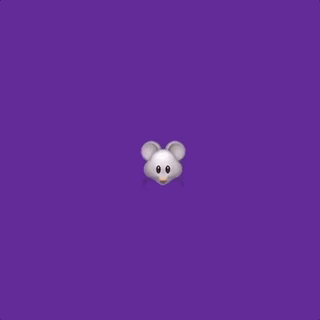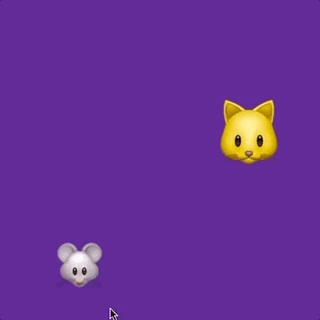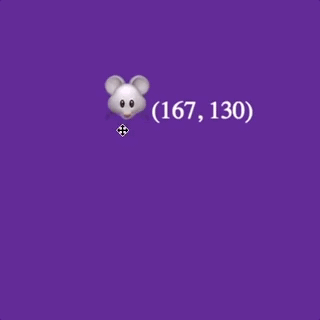掌握这个有用的模式,停止在React Components中重复逻辑! 😎原文:React Higher Order Components in 3 minutes
作者:Jhey Tompkins
译者:博轩
什么是高阶组件?
高阶组件(HOC)是 React 中用于复用组件逻辑的一种高级技巧。HOC 自身不是 React API 的一部分,它是一种基于 React 的组合特性而形成的设计模式。
译注:对,我又一次借鉴了官网 😂
它做了什么?
他们接收一个组件并返回一个新的组件!
什么时候去使用?
当你的组件之间出现重复的模式 / 逻辑的时候。
栗子:
- 挂载,订阅数据
- 为
UI增加交互(也可以使用容器组件,或者 Render Props) - 排序,过滤输入的数据
译注:第三个说法,我个人可能更加倾向于在传入组件之前做处理,而不是使用高阶组件
一个愚蠢的例子
我们有一个 Mouse 组件。
const Mouse = () => (
<span className="mouse" role="img">🐭</span>
)接下来,让我们使用 GreenSock’s Draggable 模块,来让组件变的可以拖拽。
class Mouse extends Component {
componentDidMount = () => new Draggable(this.ELEMENT)
render = () => (
<span className="mouse" ref={e => (this.ELEMENT = e)} role="img">🐭</span>
)
}
我们加一只猫 🐱
const Cat = () => (
<span className="cat" role="img">🐱</span>
)这个组件同样需要变得可拖拽✋,接下来,让我们使用高阶组件(HOC)来试一下:
const withDrag = Wrapped => {
class WithDrag extends Component {
componentDidMount = () => new Draggable(this.ELEMENT)
render = () => {
return (
<span className="draggable_wrapper" ref={e => (this.ELEMENT = e)}>
<Wrapped {...this.props} />
</span>
)
}
}
WithDrag.displayName = `WithDrag(${Wrapped.displayName || Wrapped.name})`
return WithDrag;
}我们的高阶组件(HOC)可以通过 props 接受一组件,并返回一个新的组件。
许多高阶组件会在传递组件的过程中,注入新的 props 。这通常是决定我们是否应该使用高阶组件的因素之一。如果,我们不注入 props ,我们可以使用一个容器组件,或者 Render Props。
对于我们的高阶组件(HOC),我们也可以使用 Render Props 来达到相同的效果。你可能会觉得使用 HOC 来实现并不合适。但是,这个 “愚蠢的例子” 会让你更加熟悉 HOC 。 这比注入数据的示例更加有趣!😉
让我们将这个 HOC 应用到 Cat 和 Mouse 组件上吧 👍
const Mouse = () => (
<span className="mouse" role="img">🐭</span>
)
const Cat = () => (
<span className="cat" role="img">🐱</span>
)
const DraggableMouse = withDrag(Mouse)
const DraggableCat = withDrag(Cat)
class App extends Component {
render = () => (
<Fragment>
<DraggableMouse />
<DraggableCat />
</Fragment>
)
}
接下来,让我们在高阶组件中增加 onDrag 回调函数,并在 props 中注入 x 和 y 的位置属性。
const withDrag = Wrapped => {
class WithDrag extends Component {
state = {
x: undefined,
y: undefined,
}
componentDidMount = () => new Draggable(this.ELEMENT, { onDrag: this.onDrag })
onDrag = e => {
const { x, y } = e.target.getBoundingClientRect();
this.setState({ x: Math.floor(x), y: Math.floor(y) })
}
render = () => (
<span className="draggable_wrapper" ref={e => (this.ELEMENT = e)}>
<Wrapped {...this.props} x={this.state.x} y={this.state.y} />
</span>
)
}
WithDrag.displayName = `WithDrag(${Wrapped.displayName || Wrapped.name})`
return WithDrag;
}const Mouse = () => (
<span className="mouse" role="img">
🐭
{x !== undefined &&
y !== undefined && (
<span className="mouse__position"> {`(${x}, ${y})`} </span>
)}
</span>
)现在 Mouse 组件会向用户展示他的 XY 位置属性 🤓

我们也可以给 HOC 传递 props。然后在传递的过程中过滤掉这些无用的属性。举个例子,传递一个 onDrag 回调函数。
const withDrag = Wrapped => {
class WithDrag extends Component {
componentDidMount = () => new Draggable(this.ELEMENT, { onDrag: this.props.onDrag })
render = () => {
const { onDrag, ...passed } = this.props;
return (
<span className="draggable__wrapper" ref={e => (this.ELEMENT = e)}>
<Wrapped {...passed} />
</span>
)
}
}
WithDrag.displayName = `WithDrag(${Wrapped.displayName || Wrapped.name})`
return WithDrag;
}
class App extends Component {
render = () => (
<Fragment>
<DraggableMouse
onDrag={e => console.info(e.target.getBoundingClientRect())}
/>
</Fragment>
)
}通过使用 HOC ,我们的组件仍然很简单,复杂的逻辑都交给 HOC 来处理了。 我们的组件只关心传递给他们的内容。 我们可以在其他地方重复使用它们而且不会有可以被拖拽的属性。这使得我们的应用更容易维护。
优秀的实践 👍
- 当出现重复的模式的时候,使用它们
- 为了方便调试,需要更新处理之后组件的
displayName - 传递与当前
HOC无关的所有props
糟糕的实践 👎
- 过度使用,其他模式可能会更加适合
- 改变原始组件
- 在
render方法中使用高阶组件
译注:永远不要在React render()方法中定义React组件(甚至是无状态组件)。React在每次更新状态的时候,都会废弃旧的html DOM元素并将其替换为全新的元素。比如在render()函数中定义一个输入组件,元素被替换之后就会失去焦点,每次只能输入一个字符。
注意 🙏
Refs不会被传递- 务必复制静态方法
- 大部分
HOC都可以和render props相互替换使用
这就是一篇关于高阶组件的简短介绍 ~
示例链接
withDrag Mouse and Cat (HOC)示例链接
Drag Mouse and Cat (Render Props)示例链接
withDrag Mouse and Cat (X , Y) (HOC)示例链接
Drag Mouse and Cat (X , Y)(Render Props)示例链接
Drag Mouse and Cat (X , Y)(Hooks)示例链接
官方文档:高阶组件本文已经联系原文作者,并授权翻译,转载请保留原文链接